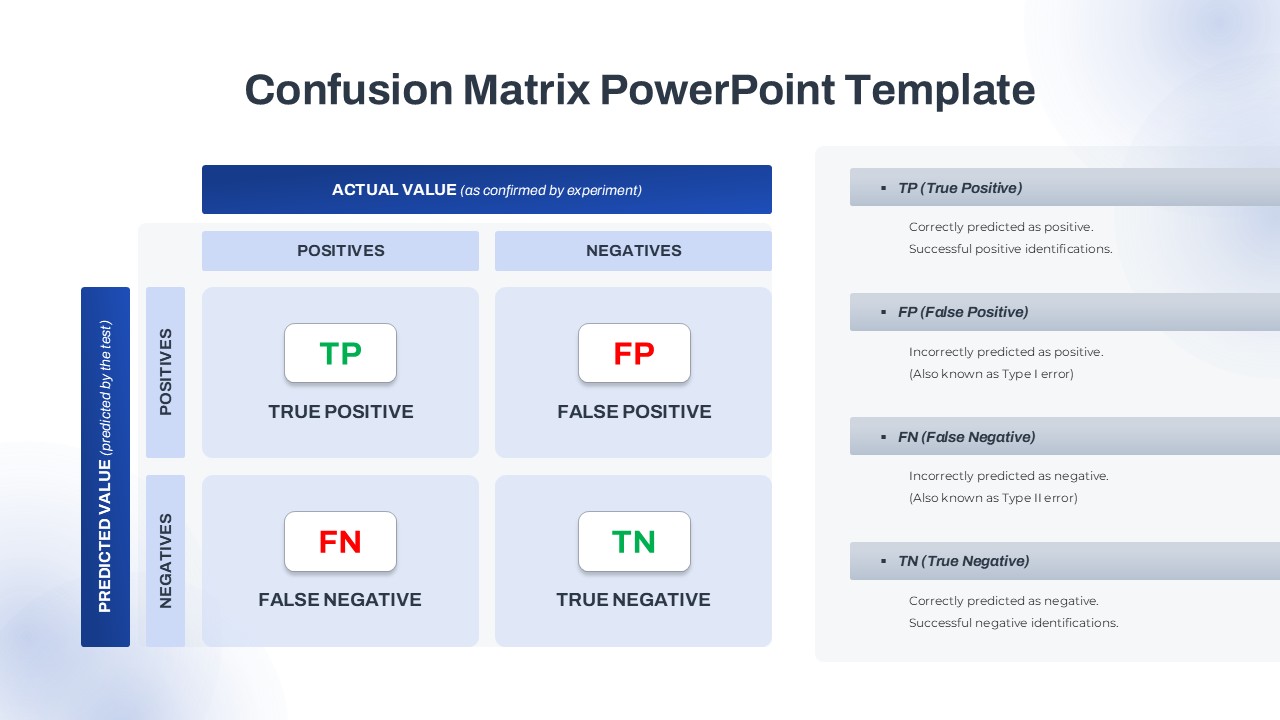black-background-presentation-template-powerpoint-google-slides


The slide features a 2×2 confusion matrix grid that clearly delineates true positives (TP), false positives (FP), false negatives (FN), and true negatives (TN) in bold, color-coded boxes. The top row is labeled “Actual Value” with separate headers for Positives and Negatives, while the left column highlights “Predicted Value” for Positive and Negative outcomes. Each cell contains a large abbreviation (TP or FP in green/red and FN or TN in red/green) with concise labels below, reinforcing the relationship between predicted and actual classification results. A sleek horizontal header bar in deep blue and subtle gradient backgrounds enhance visual hierarchy and guide the audience’s focus to key metrics.
On the right side, bullet-style callouts explain each category: TP for correctly identified positives, FP for Type I errors, FN for Type II errors, and TN for successful negative predictions. The semi-transparent callout panels use soft gray gradients to differentiate them from the main matrix while maintaining consistency with the slide’s corporate palette. Clean sans-serif fonts and balanced spacing improve readability, and minimal iconography ensures that viewers navigate through the content without distraction.
Designed as a fully editable PowerPoint and Google Slides asset, all elements are vector shapes with customizable colors, fonts, and text placeholders. You can easily adjust labels, swap color schemes, or reposition callouts to match branding guidelines. Master slide support and object grouping enable hassle-free reuse across decks and seamless collaboration without formatting glitches.
This slide adheres to modern flat design principles with ample white space, subtle shadows, and crisp typography. It empowers data scientists, business analysts, and machine learning engineers to communicate model evaluation insights effectively and supports executive reporting by breaking down complex classification outcomes into an intuitive visual matrix.
Who is it for
Data scientists, machine learning engineers, and business analysts will benefit from this confusion matrix when presenting classification model performance. Product managers, QA leads, and executive stakeholders can leverage it to align on accuracy metrics and error analysis.
Other Uses
Repurpose this matrix to visualize risk assessments, customer segmentation outcomes, A/B test results, or project milestone statuses. Adapt the grid to display survey responses, feature adoption comparisons, or compliance checklists in any industry.
Login to download this file

















































